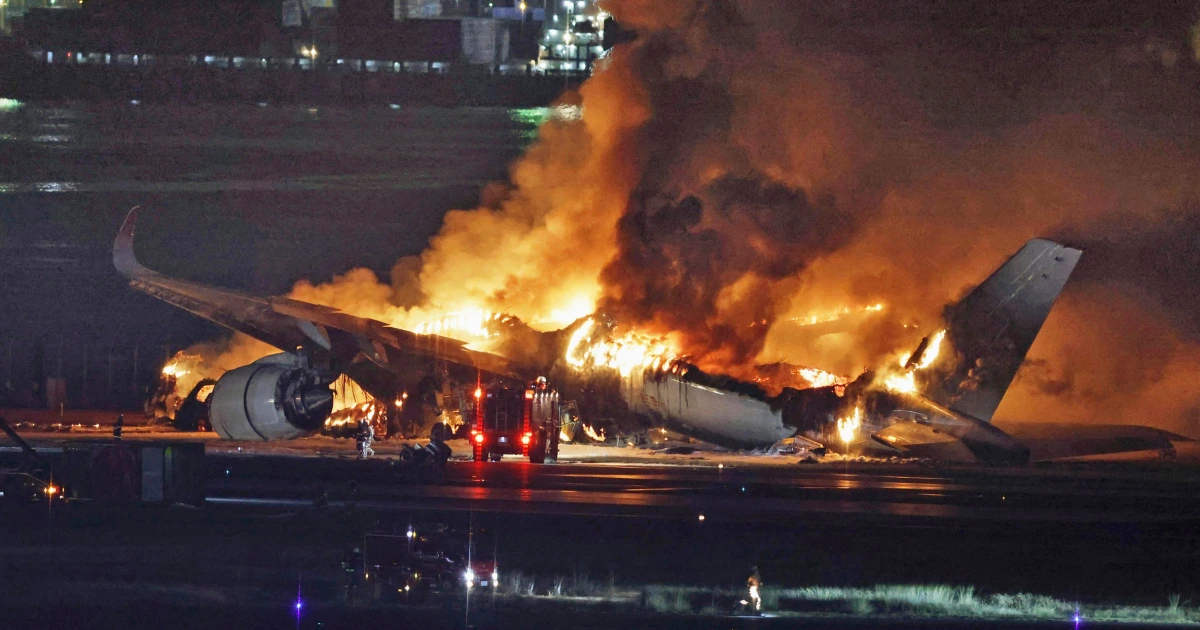Artificial Intelligence (AI) is revolutionizing numerous industries across the globe — from healthcare and finance to manufacturing and entertainment. But can it also play a decisive role in aviation by preventing tragic accidents and saving lives?
Already in the early months of this year, more than 100 people have lost their lives in air disasters, including a midair collision involving a commercial jet and a helicopter near Washington, DC, and a shocking incident where an aircraft collided with a bus on a street in São Paulo, Brazil.
These deadly events come shortly after a grim milestone — last year being recorded as one of the deadliest in aviation history, with at least 318 fatalities across 11 civilian aircraft accidents, two of which occurred just days before the year ended.
While air travel remains among the safest modes of transportation, each crash draws intense public scrutiny and reignites widespread fear of flying. The Cleveland Clinic reports that nearly 25 million adults in the United States suffer from aviophobia, or the fear of flying. This anxiety is not only triggered by fatal accidents but also by dramatic incidents such as emergency landings, doors detaching mid-flight, and planes skidding off runways.
Consistent investigations and expert analysis have shown that human error is the primary factor behind the majority of aviation accidents.
Given that AI is already widely used across the aviation sector — for optimizing flight routes, enhancing fuel efficiency, enabling predictive maintenance, and driving sustainability efforts — the pressing question arises: Can artificial intelligence further advance aviation safety and help prevent disasters?
“A lot is already being done, and even more is on the horizon,” Freshta Farzam, CEO and founder of LYTE Aviation, told Al Jazeera.
According to Farzam, AI significantly contributes to reducing aviation incidents by enhancing situational awareness, predictive diagnostics, and decision-making processes. In fields like air traffic control (ATC) and collision avoidance systems, AI is already making notable strides.
A research paper titled Artificial Intelligence in Aviation Safety: Systematic Review and Biometric Analysis emphasizes the importance of integrating advanced technologies like AI into aviation, stating that as the industry evolves, embracing innovation becomes essential for maintaining safety and efficiency.
Statistics from the International Air Transport Association (IATA) show that in 2023, there was just one accident for every 1.26 million flights — marking the lowest accident rate in over a decade. Yet, despite these encouraging figures, the following 14 months witnessed over 400 casualties, proving that there is still significant room for improvement.
Human Error Remains a Major Risk
Studies reveal that up to 80% of aviation accidents are linked to human error, with pilot mistakes accounting for roughly 53%. Despite these alarming numbers, air travel remains statistically safer than many other modes of transportation, according to the Los Angeles law firm Panish-Shea-Ravipudi LLP.
“Air travel’s safety depends heavily on the operator, the aircraft, and the rigor of training programs,” the firm noted. “Without robust safety protocols and training, air travel can become perilous for both private and commercial passengers.”
How AI Could Help Prevent Disasters
So, how exactly could AI be a game-changer for aviation safety?
According to Amad Malik, Chief AI Officer at Airport AI Exchange, there’s substantial progress in the integration of AI into aviation. However, the highly regulated nature of the industry means that implementing these technologies in commercial aviation is a slow and meticulous process.
“Current regulations demand years of operational data before any new technology can be certified for commercial use,” Malik explained.
He also highlighted that much of the current aviation systems still rely on frameworks and technologies developed decades ago. To truly revolutionize safety, there needs to be a paradigm shift — a willingness to move beyond legacy systems.
Malik envisions aircraft equipped with localized AI systems capable of detecting potential problems independently, even if pilots or air traffic controllers fail to notice them. However, true progress demands not just innovation but also a cultural shift toward adaptation and replacement of outdated processes.
The Rise of Autonomous Aviation
Major changes are already underway, particularly with the burgeoning air-taxi market, which is projected to grow dramatically. According to Spherical Insights, the air-taxi sector, valued at $4.9 billion in 2023, is expected to skyrocket to $80.3 billion by 2029. This boom is fueled largely by urban congestion and the need for faster, more efficient transportation alternatives.
As demand for both short- and long-haul flights rises, self-flying aircraft and advanced autopilot systems are becoming increasingly appealing options.
Farzam emphasizes that AI could significantly mitigate human error — which stems from fatigue, misjudgment, and poor decision-making — thus making flights inherently safer. However, she also warns that the biggest hurdle remains public trust.
“While autonomous air taxis and ‘sky buses’ are inevitable, full-scale adoption will likely take 15 years or more,” she said. “Society must first become comfortable with the idea of unmanned flight.”
Boeing’s CEO, Dave Calhoun, echoed this sentiment during an interview with Bloomberg TV in January 2023, stating:
“The future of autonomy in civil aviation is real, but it will require time, trust, and a robust certification process.”
An article from the 2023 World Economic Forum further argued that autonomous systems should not be seen as replacements for human pilots but rather as enhancements to human capability.
Already today, many functions in commercial aviation — such as autopilot operations and automated landing systems — are highly automated. Wide-body aircraft routinely perform landings in low-visibility conditions, guided by precise automated systems and advanced communication infrastructures.
Challenges of Full Automation
Despite the clear benefits, Malik, a qualified pilot himself, warns against rushing the implementation of AI across aviation without sufficient groundwork.
“Introducing AI into cockpits without adequate preparation could create more issues than solutions,” he said.
Communication remains a critical challenge. Pilots must interact seamlessly with air traffic controllers, ground crews, and other aircraft. AI systems would need sophisticated protocols to manage such communications safely and efficiently.
Malik advocates for a gradual approach where AI is integrated first into air traffic control systems to prepare the infrastructure for future autonomous aircraft.
“Ultimately, the goal should be to develop a fully AI-driven ecosystem — both in the skies and on the ground,” he added.
The Role of AI Co-Pilots
Rather than fully replacing pilots, experts suggest an interim solution: AI-powered co-pilots that support human operators, particularly during emergencies or high-stress situations.
Farzam envisions AI as an intelligent assistant in the cockpit — ready to step in when human performance falters. This hybrid model could drastically reduce the margin for error while allowing human oversight where necessary.
“The new era of aviation has already begun,” Farzam said. “AI will not only enhance safety but also drive sustainability — moving beyond experimental projects to real-world impact.”
Conclusion: A Safer Future with AI in Aviation
While a fully autonomous aviation industry remains years away, the integration of AI into existing systems is already reshaping the landscape of flight safety.
The path to AI-powered aviation requires patience, innovation, and — most importantly — public trust. But if the industry can successfully blend human intuition with machine precision, the future of flying could become safer, more efficient, and more sustainable than ever before.



